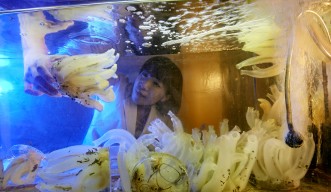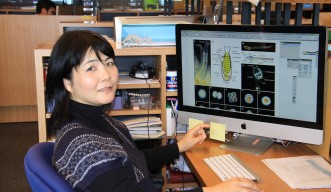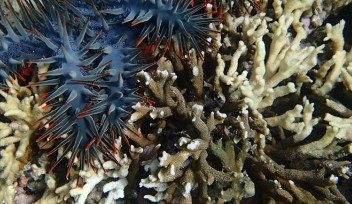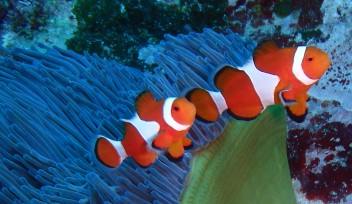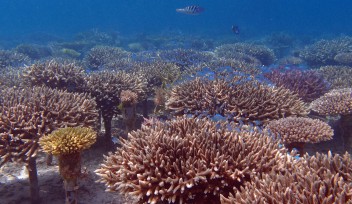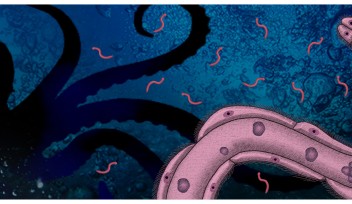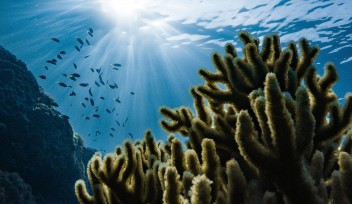At the Forefront of Evolutionary and Developmental Genomics
In February 2014, Professor Noriyuki Satoh, of OIST’s Marine Genomics Unit, published a book entitled, “Developmental Genomics of Ascidians” ISBN: 978-1-118-65618-1. Prof. Satoh has spent nearly 40 years on developmental and genomic studies of ascidians (sea squirts), and succeeded in sequencing the entire genome of the ascidian, Ciona intestinalis, in 2002. Wishing to continue his research after retirement from Kyoto University, he came to OIST, and since then he has been working at the forefront of his field. OIST’s excellent research environment, which was too good to pass up, prompted Prof. Satoh to take up a long-awaited project of compiling all of his ascidian studies into a single book. “Evolution occurs through embryonic development. You cannot understand evolution without understanding embryology,” says Prof. Satoh, noting that there are various clues from the study of ascidian development that can help us understand the evolution of chordates, animals possessing a notochord (a rod-like structure that provides axial support) and a hollow, dorsal, neural tube.
In addition to ascidians, the chordates include lancelets and vertebrates (animals with backbones), such as humans. Developmental studies of ascidians and comparison of their relationship to vertebrates could help us to understand the developmental and evolutionary processes of vertebrates. Ascidians develop from fertilized eggs to larvae in a relatively short period of time. Their developmental processes are rigid. They have determinate eggs, which means that each cell in the early embryo is destined to differentiate into a specific cell type in a specific tissue. Furthermore, ascidian larvae have a simple structure and a relatively limited number of cells comprising individual tissues, such as nervous system, muscle, and notochord. By examining expression of every gene identified by genome sequencing, an understanding of each gene’s role in development and functions of tissues and organs can theoretically be traced. Caenorhabditis (nematode worms) and Drosophila (fruit flies) have been excellent developmental and genomic models for years. Yet the large evolutionary gap between these organisms and vertebrates, thwarts attempts to apply developmental patterns and principles to vertebrates. Prof. Satoh’s book shows how the study of ascidians can be applied to vertebrate developmental, genetic, and genomic research.
“Researchers should voluntarily undertake experiments in their spare time and always look for better results. OIST provides an unusual environment that enables them to take up their own projects and to be fully immersed in their research,” says Prof. Satoh. He also hopes that his book will encourage young researchers. After many years of developing its concept, a formal plan for publication of the volume was finalized. At OIST, the process got underway, and with support from his unit member, Kanako Hisata, Prof. Satoh completed the volume in only one year. “As I started working here at OIST, I was given an opportunity not only to teach, but also to revisit my own research objectives,” he says. If the embryonic development of an individual organism may be likened to a component in the mechanism of a clock, then evolution may be imagined as time itself. Even after four decades, the “clock” of Prof. Satoh’s evolution and development research keeps on ticking. “I designed the book cover myself,” he said, expressing his deep affection for the book and his hope for progress in the future of developmental genomics studies.
By Mayumi Nishioka
Research Unit
For press enquiries:
Press Inquiry Form











